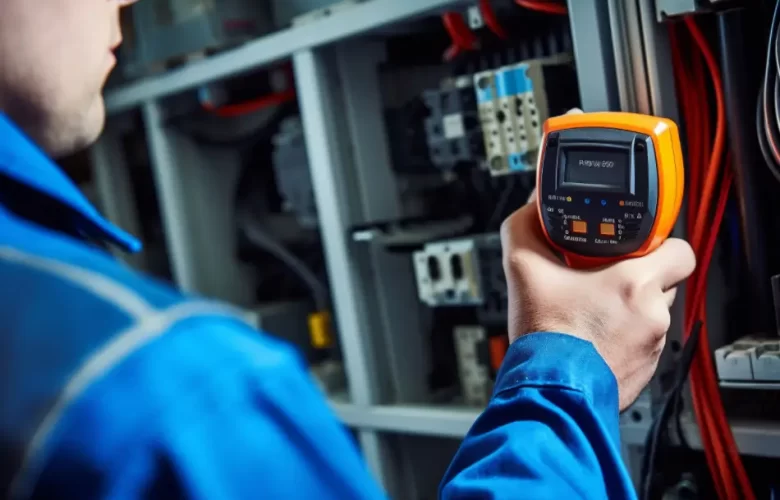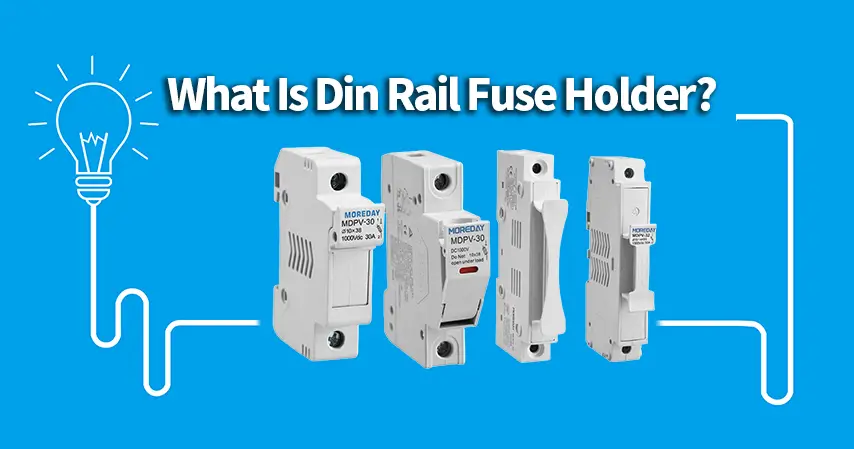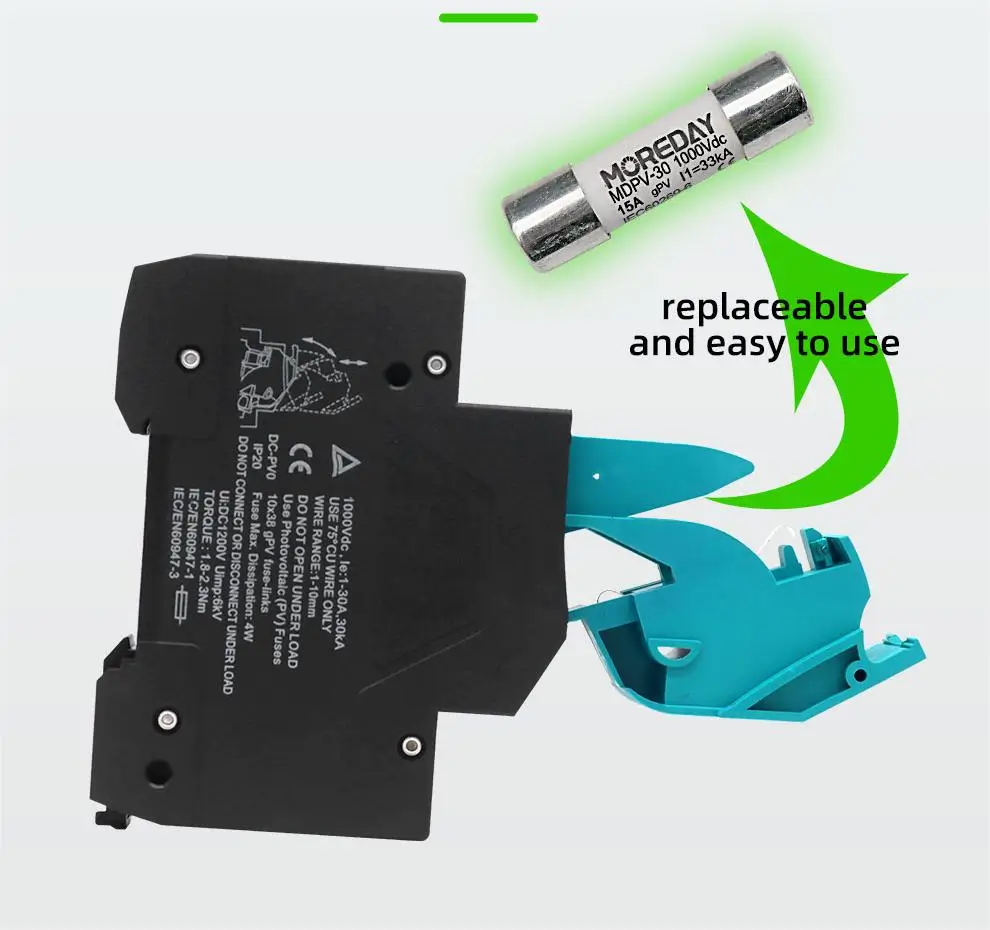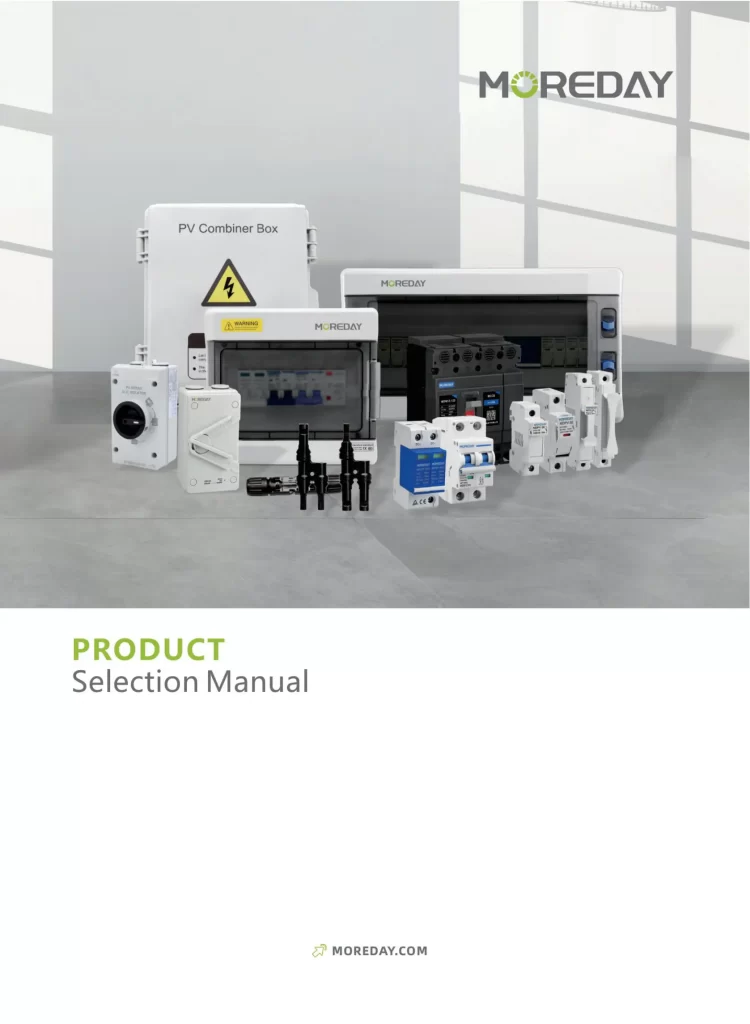Introduction
Welcome to our comprehensive guide to DIN rail fuse holders. In this article, we will explore the various aspects of DIN rail fuse holders, including their types, key features and benefits, how to choose the right one, installation and maintenance tips, and their applications in different industries.
DIN rail fuse holders are essential components in electrical systems, providing protection against overcurrent and short circuits. They are specifically designed to be mounted on DIN rails, offering secure and efficient installation in industrial and commercial settings.
With a wide range of options available, it is important to understand the different types of DIN rail fuse holders and their specific functionalities. Whether you need a standard midget fuse holder, a class CC fuse block, or a photovoltaic fuse holder, we will guide you through the selection process to ensure you choose the right one for your application.
Installation and maintenance are crucial for the optimal performance of DIN rail fuse holders. We will provide you with valuable tips and best practices to ensure a safe and reliable installation, as well as regular maintenance to prolong the lifespan of your fuse holders.

Lastly, we will explore the various applications and industries where DIN rail fuse holders are commonly used. From industrial automation to renewable energy systems, these fuse holders play a vital role in protecting electrical circuits and ensuring the smooth operation of equipment.
So, whether you are an electrical professional or a DIY enthusiast, this comprehensive guide will equip you with the knowledge and expertise needed to make informed decisions about DIN rail fuse holders. Let’s dive in and explore the world of DIN rail fuse holders together.
What is a DIN Rail Fuse Holder?
A DIN rail fuse holder is a device used to securely mount and protect fuses on a DIN rail. DIN rail fuse holders are designed to hold and protect fuses in various applications, including industrial control panels, electrical cabinets, and power distribution systems.
These fuse holders are specifically designed to be mounted on DIN rails, which are standardized metal rails used to mount various electrical components. The DIN rail fuse holder provides a convenient and organized way to install and replace fuses, ensuring the safety and reliability of the electrical system.
DIN rail fuse holders come in different types and configurations to accommodate various fuse sizes and current ratings. They are typically made of high-quality materials, such as durable thermoplastic or metal, to ensure long-lasting performance and protection.
One of the key features of DIN rail fuse holders is their ease of installation. They can be easily mounted on the DIN rail without the need for additional tools or equipment. Additionally, they provide a secure and reliable connection between the fuse and the electrical system, preventing accidental disconnection or damage.
In summary, DIN rail fuse holders are essential components in electrical systems, providing a safe and efficient way to protect and manage fuses. Their versatility, ease of installation, and reliable performance make them a popular choice for various applications in different industries.
Types of DIN Rail Fuse Holders
When it comes to DIN rail fuse holders, there are several types available to meet different application requirements. Here are some of the most common types:
Class CC Fuse Holders: These fuse holders are designed for use with Class CC fuses and provide reliable overcurrent protection for industrial systems. They are available in 1-, 2-, or 3-pole models and can be easily mounted on a DIN rail.
Midget Fuse Holders: Midget fuse holders, also known as Class CC fuse holders, are compact in size and offer a touch-safe design. They are ideal for applications where space is limited and personnel safety is a concern.
Modular Fuse Holders: Modular fuse holders are finger-safe and provide protection to personnel during fuse changing. They are available in various configurations, including single, fixed-multiple, and terminal block styles, making them versatile for different fuse types and voltage ratings.
Photovoltaic Fuse Holders: These fuse holders are specifically designed for photovoltaic applications with high DC voltages. They are capable of withstanding voltages up to 1000V and provide reliable protection for solar power generation systems.
Other Types: There are also DIN rail fuse holders available for specific fuse sizes and applications, such as Class J fuses or fuses with higher amp ratings.
When selecting a DIN rail fuse holder, it is important to consider the specific requirements of your application, including the fuse type, voltage rating, and number of poles needed. Additionally, ensure that the fuse holder meets industry standards for safety and reliability.
By understanding the different types of DIN rail fuse holders available, you can choose the right one for your application and ensure proper overcurrent protection for your system.
Key Features and Benefits
DIN rail fuse holders offer a range of key features and benefits that make them a reliable and efficient solution for overcurrent protection in industrial systems. Here are some of the key features and benefits of DIN rail fuse holders:
Secure Mounting: DIN rail fuse holders have integral DIN rail mounting capabilities, allowing for secure and easy installation onto 35mm “hat” type DIN rails. This ensures stability and reliability in the mounting process.
Touch-Safe Design: Many DIN rail fuse holders, such as the LPHV midget fuse holder series, feature a touch-safe design. This design provides protection to personnel when installing and removing fuses, minimizing the risk of electrical accidents.
Finger-Safe: Modular fuse holders are designed to be finger-safe under IEC standards, providing an IP20 grade of protection. This includes fuse changing, allowing for safe and easy maintenance without the need for additional tools.
Wide Range of Options: DIN rail fuse holders are available in various configurations to accommodate different fuse types and current ratings. This versatility ensures compatibility with a wide range of applications and industries.
High Voltage Capability: Some fuse holders, such as those designed for photovoltaic applications, are specially designed to handle high voltages up to 1000V DC. This makes them suitable for use in solar photovoltaic power generation systems.
Compact Design: Many DIN rail fuse holders feature a compact design, making them ideal for installations with limited space. The compact size allows for easy integration into control engineering systems, without compromising on performance.
Easy Fuse Replacement: DIN rail fuse holders are designed to facilitate easy and quick fuse replacement. This ensures minimal downtime during maintenance and reduces the overall cost of system operation.
In summary, DIN rail fuse holders offer secure mounting, touch-safe and finger-safe designs, a wide range of options, high voltage capability, compact design, and easy fuse replacement. These features and benefits make them a reliable and efficient choice for overcurrent protection in various industrial applications.
How to Choose the Right DIN Rail Fuse Holder
When selecting a DIN rail fuse holder, there are several factors to consider to ensure you choose the right one for your specific needs. Here are some key points to keep in mind:
Current rating: Determine the maximum current that will pass through the fuse holder. This will depend on the electrical load and the type of fuse being used.
Voltage rating: Consider the maximum voltage that the fuse holder will be subjected to. Make sure it is compatible with the voltage of your electrical system.
Fuse size: Check the dimensions of the fuse that the holder is designed to accommodate. Ensure that it matches the size of the fuse you intend to use.
Number of poles: Determine how many fuses you need to protect your circuit. Choose a fuse holder with the appropriate number of poles to accommodate your requirements.
Indicating or non-indicating: Decide whether you want a fuse holder with an indicating feature, which provides visual indication when the fuse is blown.
Mounting type: Consider the type of DIN rail you have and ensure that the fuse holder is compatible with it. Some fuse holders have integral DIN rail mounting capabilities, while others may require additional accessories for mounting.
Quality and reliability: Look for a reputable brand that offers high-quality and reliable fuse holders. Read customer reviews and ratings to get an idea of the product’s performance and durability.
By considering these factors, you can choose the right DIN rail fuse holder that meets your specific requirements and provides reliable protection for your electrical circuits. Remember to consult the manufacturer’s specifications and guidelines for further information on installation and usage.
Installation and Maintenance Tips
Installing and maintaining DIN rail fuse holders is essential for ensuring the safe and efficient operation of electrical systems. Here are some tips to help you with the installation and maintenance process:
Proper Mounting: When installing DIN rail fuse holders, make sure to securely mount them to 35mm “hat” type DIN rails. This will ensure stability and prevent any accidental dislodging.
Fuse Selection: Choose the appropriate fuse for your specific application. Consider factors such as voltage rating, current rating, and fuse type. It is crucial to use fuses that are compatible with the DIN rail fuse holder to ensure optimal performance and protection.
Regular Inspections: Regularly inspect the DIN rail fuse holders for any signs of damage or wear. Check for loose connections, corrosion, or any other issues that may affect the functionality of the fuse holder.
Fuse Replacement: When replacing fuses, always follow the manufacturer’s guidelines. Ensure that the power is turned off before removing or replacing fuses. Use proper tools and techniques to avoid any electrical hazards.
Proper Labeling: Clearly label the DIN rail fuse holders to indicate the type and rating of the fuses installed. This will help with easy identification and troubleshooting in case of any issues.
Maintenance Schedule: Establish a regular maintenance schedule to inspect and clean the DIN rail fuse holders. This will help prevent any buildup of dirt or debris that can affect the performance of the fuse holder.
By following these installation and maintenance tips, you can ensure the reliable and safe operation of your DIN rail fuse holders. Remember to always refer to the manufacturer’s instructions for specific guidelines and recommendations.
Applications and Industries
DIN rail fuse holders are widely used in various applications and industries due to their reliability and safety features. Here are some of the common applications and industries where DIN rail fuse holders are commonly used:

Industrial Automation: DIN rail fuse holders are extensively used in industrial automation systems to protect sensitive electronic equipment and control circuits from overcurrent and short circuit conditions. They provide reliable and efficient protection for motor control centers, PLCs, and other industrial control systems.
Power Distribution: DIN rail fuse holders are an essential component in power distribution systems, ensuring the safe and reliable distribution of electrical power. They are commonly used in switchgear, distribution panels, and circuit breaker enclosures to protect electrical circuits and equipment from overcurrents.
Renewable Energy: With the growing adoption of renewable energy sources such as solar and wind power, DIN rail fuse holders play a crucial role in protecting the electrical systems of solar inverters, wind turbines, and other renewable energy installations. They provide reliable protection against overcurrents and short circuits, ensuring the safe operation of these systems.
Building Automation: DIN rail fuse holders are commonly used in building automation systems to protect circuits and equipment in commercial and residential buildings. They are used in HVAC systems, lighting control panels, and other building automation applications to ensure the safety and reliability of electrical installations.
Transportation: DIN rail fuse holders are also used in the transportation industry, including railways, automobiles, and marine applications. They provide protection for electrical circuits and equipment in vehicles, ensuring the safe and reliable operation of various systems such as lighting, HVAC, and control circuits.
Telecommunications: DIN rail fuse holders are used in telecommunications systems to protect sensitive equipment and circuits from overcurrents and short circuits. They are commonly used in data centers, telecom cabinets, and communication equipment to ensure the uninterrupted operation of telecommunication networks.
In conclusion, DIN rail fuse holders find applications in a wide range of industries and provide crucial protection for electrical circuits and equipment. Their reliability, safety features, and ease of installation make them an essential component in various applications where electrical protection is paramount.
Derek Ke
Hey, I’m Derek Ke, the founder of Moredaydc.com, an expert in solar electrical products and ev charging.
In the past 15 years, we have helped 60 countries and nearly 500 customers (such as farms, residences, industrial and commercial) solve new energy and green power problems. This article aims to share more knowledge about solar electricity and new energy with everyone, so that green electricity can enter every home.
Make Electricity Available To All People




